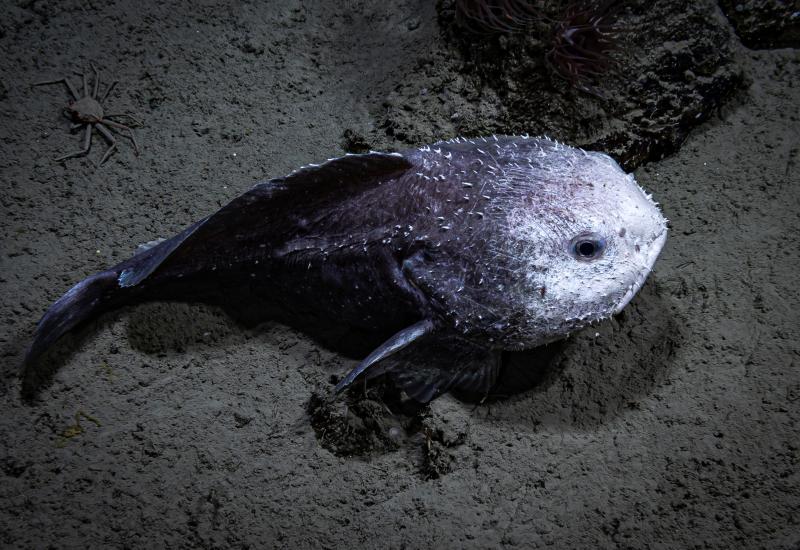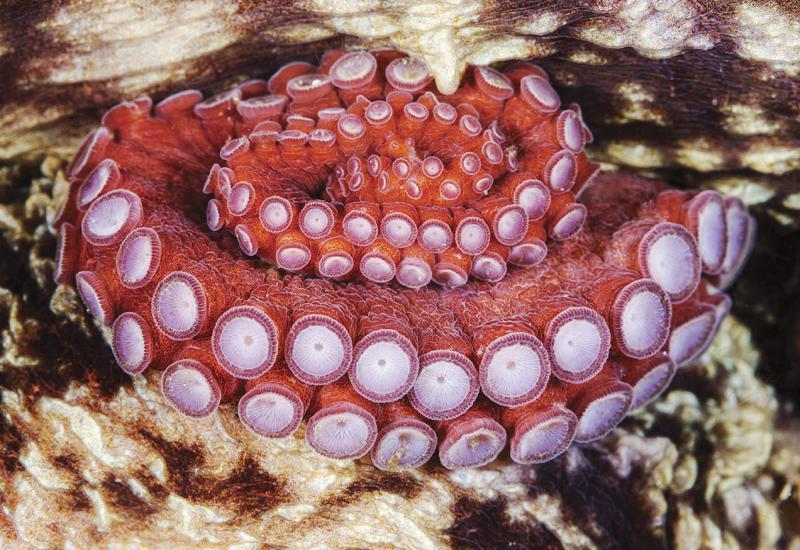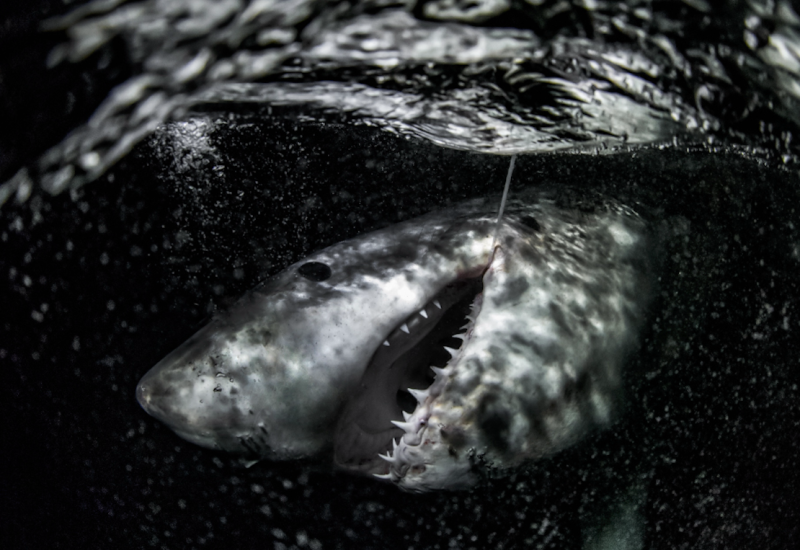Non-Native Damselfish Species Invades Gulf of Mexico
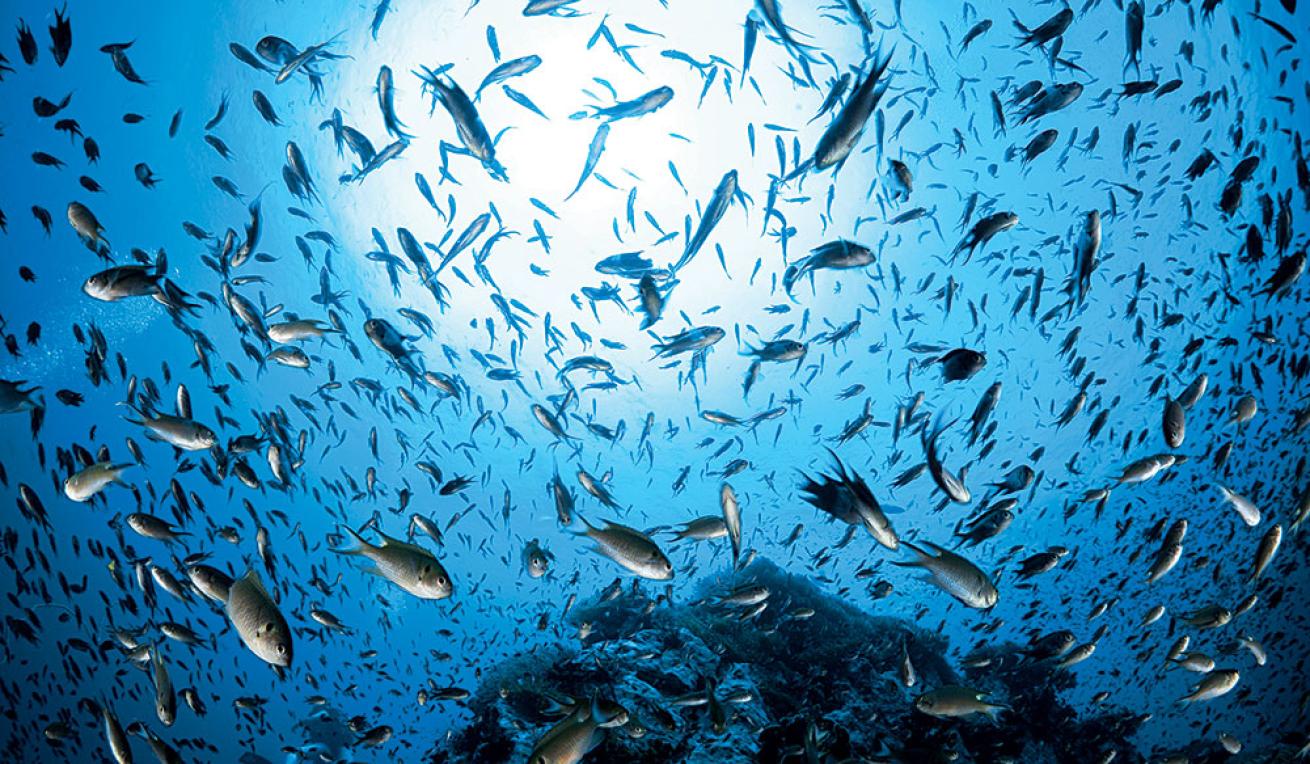
Kagii Yasuaki/Nature Production/Minden PicturesAn invasive species of damselfish has been increasing in population in the Gulf of Mexico.
The regal damselfish — yellow and blue in color and notoriously feisty by nature — is just the sort of reef fish most divers wish to encounter.
But when scientists began sighting Neopomacentrus cyanomos off Mexico’s Yucatan Peninsula back in 2013, they felt uneasy rather than delighted.
That’s because this 3-inch-long swimmer belongs in the Indo-Pacific, not the Gulf of Mexico.
Fast-forward to 2016.
The population of this species in the Gulf of Mexico had swelled, numbering in the low thousands.
Dr. Matthew Johnston, a marine biologist at Florida’s Nova Southeastern University, realized the situation required further monitoring. He created a computer model to predict the continuing spread of this nonendemic species. Current and larvae drift, among other factors, were considered when Johnston developed his prediction.
The way the currents flow, says Lad Akins, director of special projects for the Reef Environmental Education Foundation, “there’s not a whole lot of interaction between that part of Mexico and the rest of the Caribbean. Any expansion [of this fish population] should have been very slow to happen.
“We were wrong,” he says.
In early 2017, regal damselfish appeared off the Flower Garden Banks National Marine Sanctuary near the east coast of Texas, as well as the Florida Panhandle, hundreds of miles away from where it was first spotted in 2013.
“The numbers have skyrocketed,” Akins says.
As with the spread of most nonendemics, how the problem originated is difficult to accurately pin down.
The prevailing theory points to oil rigs, which petroleum companies commonly tow from one location to another across oceans — say, from the Red Sea to the Gulf of Mexico.
All the corals, sponges, fish and critters nesting among the rigging can come along for the ride.
Once relocated, they spread and settled farther than researchers initially realized. They were already in more locations than anyone knew about — which is one problem with Johnston’s model predictions.
Another complication with the model is the possibility that the fish traveled on microcurrents, or were able to navigate the Gulf of Mexico’s currents by radically changing depths. Regardless, they’re in the Gulf now, and a threat to reefs for several reasons.
For starters, any diver who’s ever been tricked into nosing in close to a damsel guarding eggs knows how aggressive this little fighter is. The dimunitive fish have no problem taking on ocean dwellers 15 times their size.
Knowing this, says Akins, “it’s possible this fish could out-compete some of our native fish.”
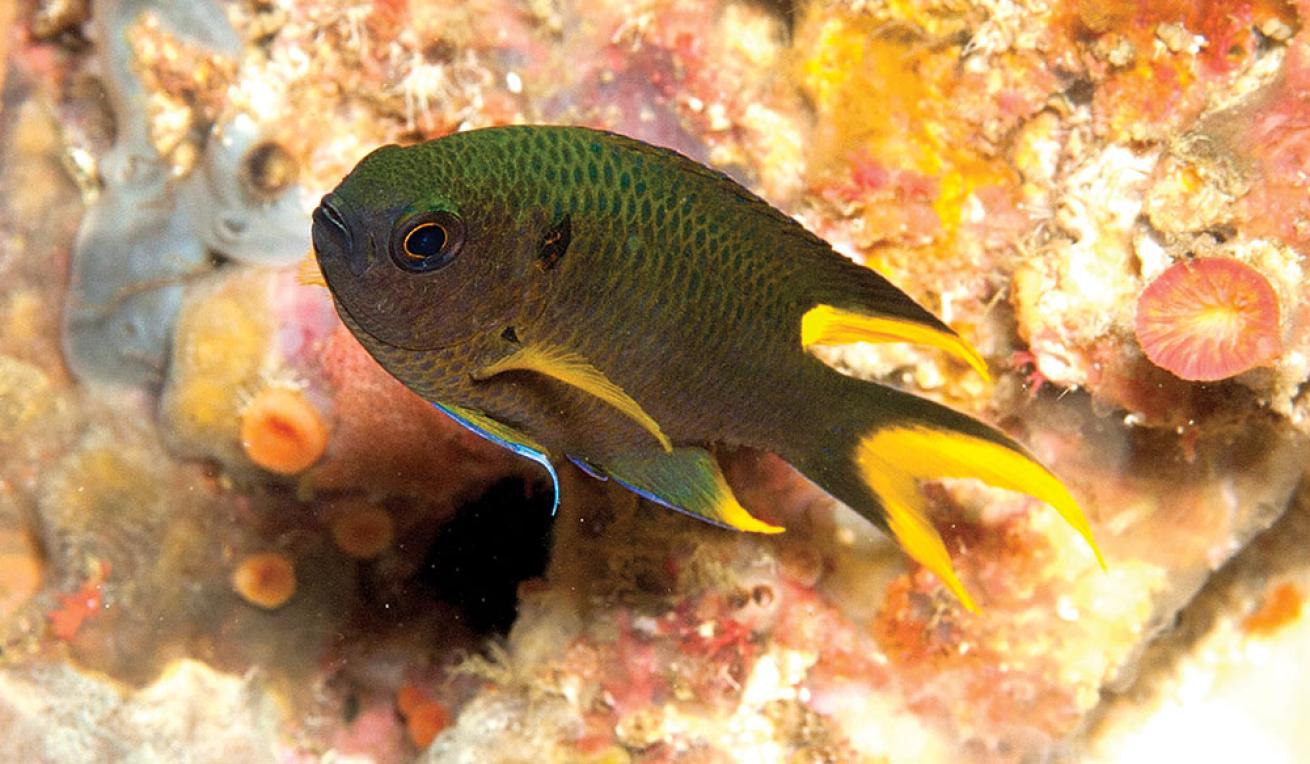
Paul HumannNot all damselfish species are invasive. Here are some interesting facts about these reef-dwelling fishes:
There are about 250 species of damselfish, which populate tropical and temperate waters worldwide, from the Indo-Pacific to the Atlantic.
These fish rarely exceed a length of 6 inches, but they are known to be touchy, nipping at much larger intruders of their territory.
Studies show that the male Cortez damselfish participates in filial cannibalism — males can consume 25 percent of their egg clutches.
The short list of fish that could be edged out for food and habitat includes blue and brown chromis, each roughly the same size as the regal damselfish.
Right now, the first step that divers can take is to report any sightings of this fish in the Gulf of Mexico on REEF’s website at reef.org. This aids marine biologists in determining the exact range of this species.
Beyond reporting sightings, there isn’t much else for divers to do — for now. At the moment, there’s no specific plan in place for eradicating this species from the Gulf of Mexico, but Akins anticipates that by the end of 2018, detailed training and equipment for removing this fish will be available.
New training will be required because removing this fish won’t be the same process used to try to eradicate lionfish, another Indo-Pacific transplant.
“We are not going to be out there with a 4-foot-long three-prong spear shooting these fish out of the water,” Akins says, referencing the preferred kill method for the lionfish.
“Instead, our approach will likely include using larger hand nets, which is something that most divers aren’t familiar with yet,” he adds.
Hopefully, the damselfish invasion won’t worsen exponentially in the meantime, either in number or in a way not yet foreseen by scientists.
Says Akins, “The bigger picture is that any time you throw a new player into a system that has been evolving for thousands of years, you can’t predict how it could shake up things.”

